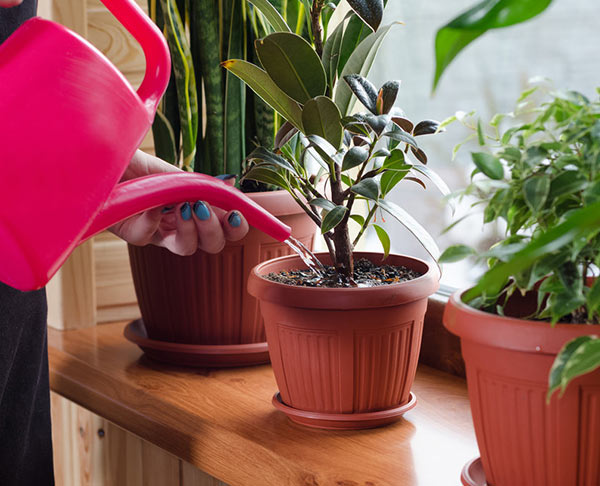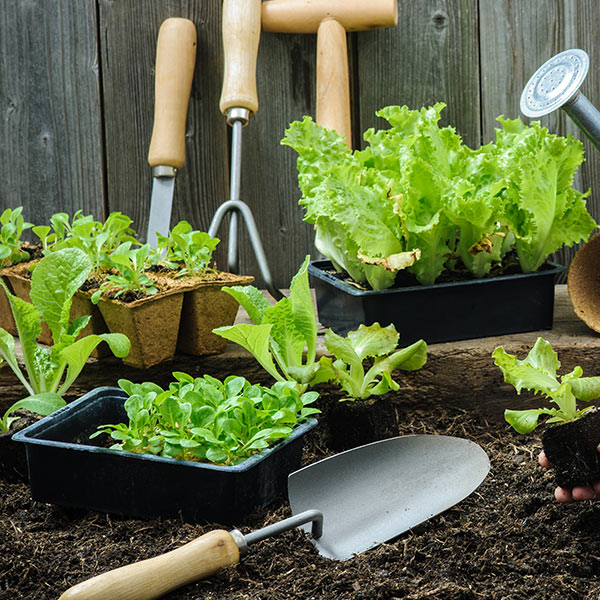At its most basic level, hydroponics is when plants are grown in a nutrient solution rather than soil. Instead of the roots growing down into dirt and gaining nutrients that way, in a hydroponic system, the roots grow into a liquid solution that is fortified with all the essential nutrients for healthy plants.
While it is possible to grow plants hydroponically outside, the vast majority of hydroponic systems are used in greenhouses or other indoor spaces. There are many small, commercially available hydroponic systems that people can use to grow hydroponic plants in their homes.
Hydroponics History
To fully answer the question of “What is hydroponic farming?” we need to take a look at its surprisingly colorful history, which can be divided into ancient and modern.
Ancient History
While they may not have known the science behind it, ancient people figured out that you could grow hydroponic plants without the use of soil.
Ancient history of HydroponicsThe Hanging Gardens of Babylon is perhaps one of the earliest examples of a hydroponic system. One of the seven wonders of the ancient world, it’s often cited as being the first known use of hydroponics to grow plants. Around 600 B.C. near modern day Baghdad in Iraq, the Gardens were said to have existed along the Euphrates River, although it’s likely they were made from terraces rather than anything hanging.
However, the use of hydroponics in these ancient gardens has been disputed. It should also be noted that the existence of the Gardens themselves is also disputed.
Other ancient growing techniques that definitely existed, but that are only hydroponic-adjacent, include the floating gardens of Mesoamerica in the 1100s, called Chinampas, and similar floating gardens in ancient China that were described by famed explorer Marco Polo in the 1300s (although they likely existed long before that).
The Chinampas, which were built in shallow lakes, consisted of areas of about 300 by 26 ft with underwater “fences” made of dead reeds that had been interwoven. The enclosed spaces were filled with a unique growing medium: alternating layers of rock, aquatic vegetation, natural waste, and lake bottom soil.
While not truly hydroponic, the Chinampas and floating gardens of ancient China can be considered a distant relative of hydroponics.

How Does Hydroponics Work?
As the root of the word “hydroponics” implies, the water (hydro) does the work or labor (ponos) in hydroponic gardening.
To grow, plants need a few essential ingredients: light, carbon dioxide (which they usually get from general air flow in their environment), water, and nutrients. In traditional gardening, plants get the nutrients they need from soil.
In hydroponics, rather than plants absorbing nutrients from soil, they absorb those nutrients from a liquid nutrient solution, which is mixed in with the water.
Growing in soil can drastically affect a plant’s root architecture and its ability to produce food because nutrients may not be spread evenly throughout the soil.
On the other hand, growing in liquid solution guarantees the plants’ roots all have consistent access to nutrients at all times, meaning their nutrient uptake and growth is more efficient. This causes the plants to grow quicker and larger than if they were grown in soil.
The Basic Components of A Hydroponic System.
Not all hydroponics systems are the same, but they do all have some common components. They all have some kind of growing tray where the plants actually grow. In some systems, these trays have only water and the liquid nutrient solution in them, and in other systems the plants grow in a non-soil material like sand, rock or wool.
The Basic Components of A Hydroponic SystemHydroponics systems will usually have a nutrient reservoir where excess nutrient solution is kept. The systems must have a way to get the nutrient solution into the growing tray. This can be done actively by an electric water pumping mechanism or passively by the use of wicks.
Some systems include air pumps and air stones in the reservoirs to keep the nutrient solution in motion at all times.
Hydroponic growing systems usually also have growing lights as part of their operations. Often, larger hydroponics systems will have some kind of software that monitors the plants and keeps track of them. Even smaller systems tend to rely on timers to keep a regular schedule for watering and light usage.
And, of course, the most important element of any hydroponics system is the nutrient solution itself, which is added to the water.


No comment